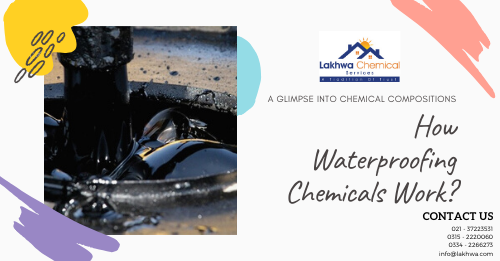How Waterproofing Chemicals Work
Introduction
No material is itself sturdy or non-durable, for Waterproofing it’s the interaction of the material with its in-service environment that determines its durability” – says a widely known concrete individual Larry Masters. Thus, with relevance concrete, sturdiness will depend upon the character of the concrete (and which means impermeability) and therefore the aggressiveness of the in-service atmosphere. The accuracy of those final restorations is very dependent on the impression materials and techniques used. Elastomeric impression materials provide high elastic recovery and acceptable flexibility on the applied surface and provide protection against water leakage.
Read More
What causes the bathroom to leak
How to repair an underground water tank using waterproofing
How to fix leaking water tank
Bitumen Coating Process
The modern analysis provides us with many ways to safeguard our precious homes against a leak within the toilet, sinks, wash basin water pipe etc. However, the additional major problem is once there’s seepage in soil that will severely have an effect on the foundation of the house. Hot mix bitumen is heated and poured at temperatures ranging from three hundred to 350 degrees Fahrenheit. chances are high that, this is the bitumen that has been used on projects around your home in the past and on the streets, highways, and interstates around it. it is a versatile mix that’s extremely weather resistant and able to repel water (which is why it’s such a preferred choice). Hot combine bitumen is used on days that are above 40 degrees only as a result of it cools down very quickly.
Foundation Waterproofing Solution
Years of negligence often leaves the homes groundwork unprotected. it’s definitely recommended to consult an expert at the very initial stage. keep in mind that’s essential to dry out the world to stop the property from the large harm. If you are doing plan to pair yourself, it’s prompt that you just use a rubberized liquid membrane. However, it’s suggested to use professionals. don’t choose a normal coating. smart waterproofing could be a wise investment. Even AN air gap is dangerous. Any water can quickly flow down and harm the property.
An Expert Advice
If you notice a cracked groundwork downside directly rummage around for the foremost dependable answer. use an expert From Waterproofing.pk commits 24/7 for Service Highest Quality Service Superior Consultation recommendation. reasonable rate. no matter be the explanation fast measures ought to be taken to resolve such problems. it’s vital that the instant you observe signs of base distress, don’t wait directly rummage around for corrective measures.
Read More
How metal gutter helps corrugated sheet from leakage
The benefit of using liquid waterproofing over the corrugated sheet
Which is better: waterproof chemical or water-shedding metal roof
The process of Waterproofing Coating
1- initial layer fills the cracks and holes within the surface.
2- Second layer attach with the primary layer to fill the remaining cracks and makes the roof versatile.
3- Third layer lined with membrane sheets and create high flexural strength.
4- the Fourth layer cover the sheets.
5- the Fifth layer makes the roof a lot of sufficient compression strength.
Elastomeric Application Recently, new elastomeric impression materials with terribly high elastic recovery and high tear strength are introduced. Addition polymers (polyvinyl siloxanes) have a moderately low-molecular-weight silicone that contains silane teams. Since addition silicones don’t produce a volatile by-product throughout the chemical process, terribly tiny dimensional changes occur on set. Hydroxide teams in several products turn out element gas. leading to little bubbles on the model surface if running isn’t delayed by 30-60 minutes. several of those addition silicones contain catalysts like atomic number 46 that absorb this chemical element. Newer addition silicones are formulated to be a lot of hydrophilic.




Leave a Reply
Want to join the discussion?Feel free to contribute!